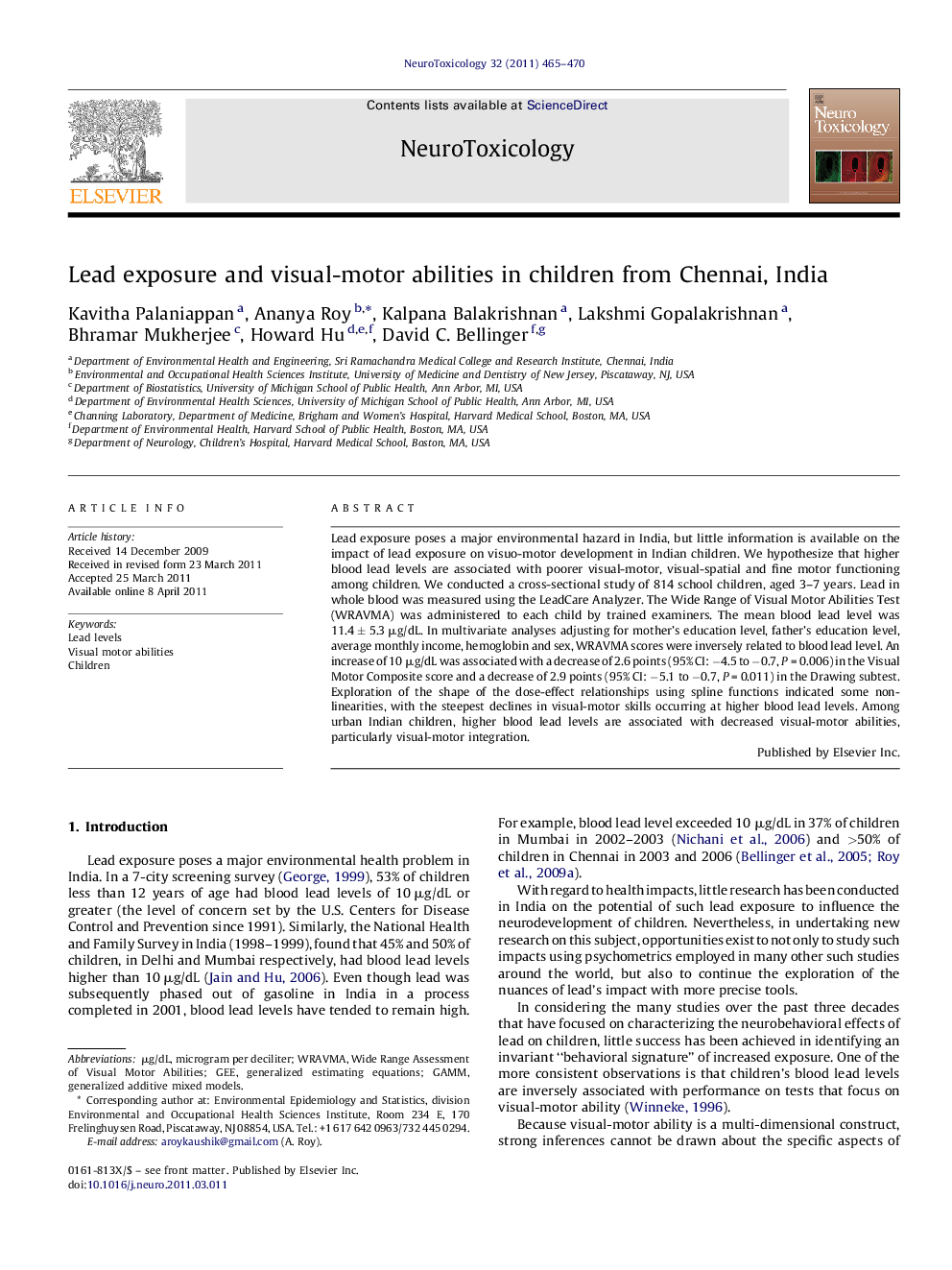| Article ID | Journal | Published Year | Pages | File Type |
|---|---|---|---|---|
| 2589874 | NeuroToxicology | 2011 | 6 Pages |
Lead exposure poses a major environmental hazard in India, but little information is available on the impact of lead exposure on visuo-motor development in Indian children. We hypothesize that higher blood lead levels are associated with poorer visual-motor, visual-spatial and fine motor functioning among children. We conducted a cross-sectional study of 814 school children, aged 3–7 years. Lead in whole blood was measured using the LeadCare Analyzer. The Wide Range of Visual Motor Abilities Test (WRAVMA) was administered to each child by trained examiners. The mean blood lead level was 11.4 ± 5.3 μg/dL. In multivariate analyses adjusting for mother's education level, father's education level, average monthly income, hemoglobin and sex, WRAVMA scores were inversely related to blood lead level. An increase of 10 μg/dL was associated with a decrease of 2.6 points (95% CI: −4.5 to −0.7, P = 0.006) in the Visual Motor Composite score and a decrease of 2.9 points (95% CI: −5.1 to −0.7, P = 0.011) in the Drawing subtest. Exploration of the shape of the dose-effect relationships using spline functions indicated some non-linearities, with the steepest declines in visual-motor skills occurring at higher blood lead levels. Among urban Indian children, higher blood lead levels are associated with decreased visual-motor abilities, particularly visual-motor integration.
► We examine the dose response relationship between blood lead levels and visual motor functioning among children in India ► Visual spatial and fine motor abilities decrease linearly with increasing lead levels. ► The association between visual motor ability and lead levels is non linear.
